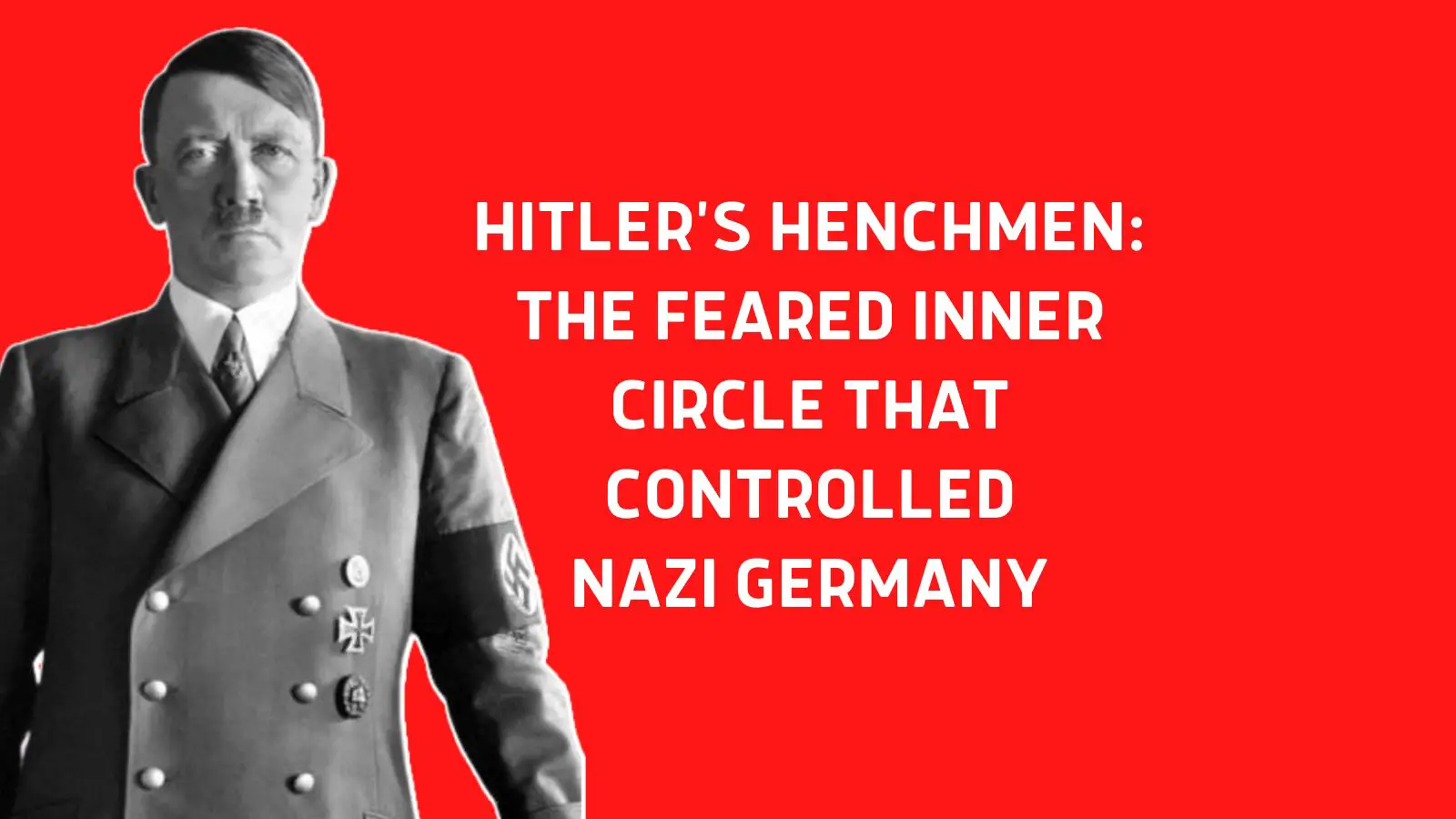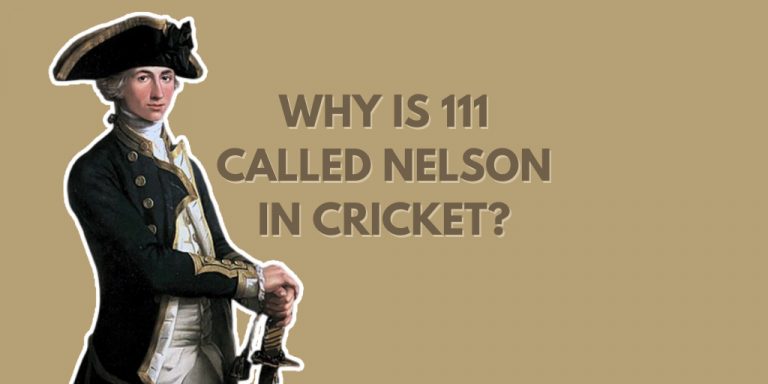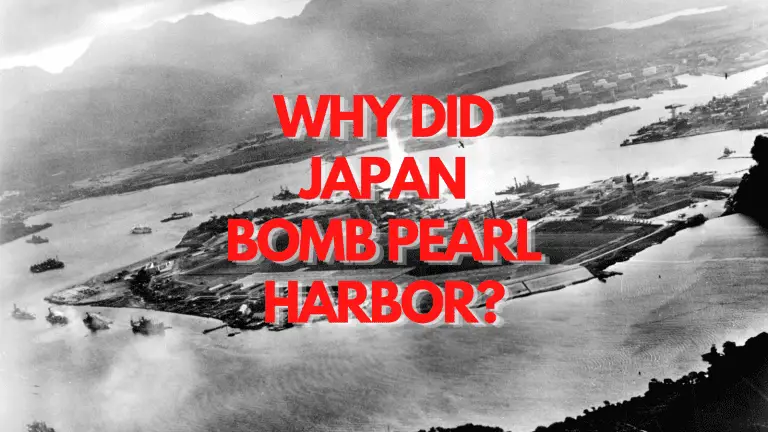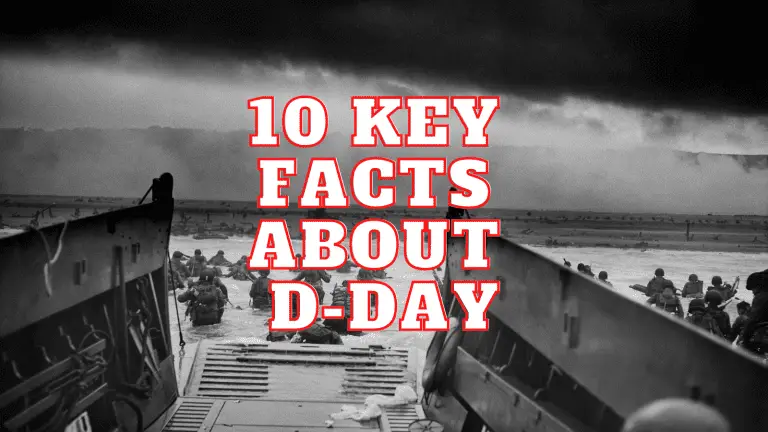Hitler’s Henchmen: The feared inner circle that controlled Nazi Germany
Adolf Hitler arguably orchestrated an unimaginably evil era in the history of the modern world. But it took much more than just the unbridled ambition of one man to plunge Europe and the world into a war more destructive and bloodier than any in history. How then did Adolf Hitler not only take up a position of such power but also get so many to carry out his bidding? The men who formed Hitler’s inner circle were the most powerful leaders in the Nazi Party, comprised of a carefully composed crew of military commanders, administrative leaders, and Nazi Party Ministers.
What follows is a description of Hitler’s closest henchmen, who they were, as well as a concise brief of each of their roles in his greater ideal.
[/et_pb_text][/et_pb_column][/et_pb_row][et_pb_row _builder_version=”4.14.8″ _module_preset=”default” global_colors_info=”{}”][et_pb_column type=”4_4″ _builder_version=”4.14.8″ _module_preset=”default” global_colors_info=”{}”][et_pb_text _builder_version=”4.14.8″ _module_preset=”default” global_colors_info=”{}”]1. Hermann Göring (1893–1946)
[/et_pb_text][/et_pb_column][/et_pb_row][et_pb_row _builder_version=”4.14.8″ _module_preset=”default” column_structure=”1_5,3_5,1_5″][et_pb_column _builder_version=”4.14.8″ _module_preset=”default” type=”1_5″][/et_pb_column][et_pb_column _builder_version=”4.14.8″ _module_preset=”default” type=”3_5″][et_pb_image src=”http://historywithhenry.com/wp-content/uploads/2022/02/1-8.jpg” _builder_version=”4.14.8″ _module_preset=”default” alt=”Hitler’s Henchmen ” title_text=”1″ hover_enabled=”0″ sticky_enabled=”0″][/et_pb_image][/et_pb_column][et_pb_column _builder_version=”4.14.8″ _module_preset=”default” type=”1_5″][/et_pb_column][/et_pb_row][et_pb_row _builder_version=”4.14.8″ _module_preset=”default” global_colors_info=”{}”][et_pb_column type=”4_4″ _builder_version=”4.14.8″ _module_preset=”default” global_colors_info=”{}”][et_pb_text _builder_version=”4.14.8″ _module_preset=”default” global_colors_info=”{}”]Göring held the highest rank of all the Nazi officials who stood trial at the International Military Tribunal at Nuremberg. Göring joined the Nazi party in 1923 after hearing Adolf Hitler speak publicly. He was decorated during the first World War for his contribution as a fighter pilot, going on to make up the inner circles of Nazi power. Göring held many leadership positions and power holds within the Nazi state once Hitler was appointed as Chancellor in 1933. He was Commander in Chief of the German Air Force or Luftwaffe, and Director of the Four-Year Plan for the German economy. When war broke out in Europe, he was also acknowledged as Hitler’s obvious successor. Göring instructed Reinhard Heydrich, the Security Police chief, to coordinate and orchestrate a “total solution” to the “Jewish question”.
Göring was charged by the International Military Tribunal for crimes against peace, war crimes, crimes against humanity, and conspiracy to commit crimes against peace, war crimes, and crimes against humanity. He was convicted on all four counts and sentenced to death. He did not however serve this sentence, committing suicide instead in his prison cell on the eve of his scheduled execution.
[/et_pb_text][/et_pb_column][/et_pb_row][et_pb_row _builder_version=”4.14.8″ _module_preset=”default” global_colors_info=”{}”][et_pb_column type=”4_4″ _builder_version=”4.14.8″ _module_preset=”default” global_colors_info=”{}”][et_pb_text _builder_version=”4.14.8″ _module_preset=”default” global_colors_info=”{}”]2. Heinrich Himmler
[/et_pb_text][/et_pb_column][/et_pb_row][et_pb_row _builder_version=”4.14.8″ _module_preset=”default” column_structure=”1_5,3_5,1_5″][et_pb_column _builder_version=”4.14.8″ _module_preset=”default” type=”1_5″][/et_pb_column][et_pb_column _builder_version=”4.14.8″ _module_preset=”default” type=”3_5″][et_pb_image src=”http://historywithhenry.com/wp-content/uploads/2022/02/Hitlers-Henchmen-The-feared-inner-circle-that-controlled-Nazi-Germany.jpg” _builder_version=”4.14.8″ _module_preset=”default” alt=”Hitler’s Henchmen” title_text=”Hitler’s Henchmen The feared inner circle that controlled Nazi Germany” hover_enabled=”0″ sticky_enabled=”0″][/et_pb_image][/et_pb_column][et_pb_column _builder_version=”4.14.8″ _module_preset=”default” type=”1_5″][/et_pb_column][/et_pb_row][et_pb_row _builder_version=”4.14.8″ _module_preset=”default” global_colors_info=”{}”][et_pb_column type=”4_4″ _builder_version=”4.14.8″ _module_preset=”default” global_colors_info=”{}”][et_pb_text _builder_version=”4.14.8″ _module_preset=”default” global_colors_info=”{}”]Heinrich Himmler was not just a leading member of the Nazi Party but also the orchestrator of the horrors of the Holocaust. After becoming a member of the Nazi Party in 1923, he was appointed as the Reichsführer of the SS in 1929 by Hitler. Under his leadership, the SS had expanded to over 50,000 members by 1933. It was a natural progression for Himmler to go on to become chief of the German police, eventually controlling all of Germany’s police force, including the Gestapo. After he impressed Hitler with the establishment of the first concentration camp at Dachau, Hitler authorised him to establish a centralized concentration camp system.
Himmler formed the paramilitary death squad of Nazi Germany, known as the Einsatzgruppen. It was this squad that played an integral role in the mass extermination of the Jews. Himmler oversaw the Final Solution and was responsible for killing approximately 6 million victims, among them Jews, the disabled, and the Romani people.
Himmler suffered psychosomatic illnesses when the final years of the war were playing out. He also attempted peace negotiations with the Western Allies without Hitler’s knowledge and was immediately relieved of his position when Hitler found out. Hitler ordered his arrest and Himmler donned a disguise in an attempt to escape but he was captured by the Western Allies and committed suicide while in custody.
[/et_pb_text][/et_pb_column][/et_pb_row][et_pb_row _builder_version=”4.14.8″ _module_preset=”default” global_colors_info=”{}”][et_pb_column type=”4_4″ _builder_version=”4.14.8″ _module_preset=”default” global_colors_info=”{}”][et_pb_text _builder_version=”4.14.8″ _module_preset=”default” global_colors_info=”{}”]3. Joseph Goebbels
[/et_pb_text][/et_pb_column][/et_pb_row][et_pb_row _builder_version=”4.14.8″ _module_preset=”default” global_colors_info=”{}”][et_pb_column type=”4_4″ _builder_version=”4.14.8″ _module_preset=”default” global_colors_info=”{}”][et_pb_text _builder_version=”4.14.8″ _module_preset=”default” global_colors_info=”{}”]Apart from being among Hitler’s closest associates, Joseph Goebbels was also intensely antisemitic and took advantage of his great oratory skills to air his antisemitic views through his public speeches. He joined the Nazi party in 1924 and became the district leader of Berlin just two years later in 1926. Goebbels used his position as Reich Minister of propaganda to favourably advocate the Nazi regime to the German people using catchy slogans and posters. He founded the newspaper Der Angriff which printed antisemitic and highly communistic content, becoming editor of the newspaper, Das Reich, later in 1940.
The Nazis seized power, allowing Goebbels to take up the reins as president of the newly established Chamber of Culture which essentially put him in control of every media source, including the press, newspapers, radio, and arts.
He was a strong proponent of Total War, advocating bringing the entire economy to a war footing. Hitler escaped an attempted assassination and then appointed Goebbels as the “Reich Plenipotentiary for Total War”. Hitler thereby charged him with expanding the workforce for the Wehrmacht but it was too little too late and the men were inadequately prepared for war.
Goebbels moved into the Vorbunker with his family, which formed part of the Führerbunker. In Hitler’s will, Goebbels was pronounced the Reich Chancellor, a position he held for only one day following Hitler’s death. Goebbels killed his family and then committed suicide the following day.
[/et_pb_text][/et_pb_column][/et_pb_row][et_pb_row _builder_version=”4.14.8″ _module_preset=”default” global_colors_info=”{}”][et_pb_column type=”4_4″ _builder_version=”4.14.8″ _module_preset=”default” global_colors_info=”{}”][et_pb_text _builder_version=”4.14.8″ _module_preset=”default” global_colors_info=”{}”]4. Rudolph Hess
[/et_pb_text][/et_pb_column][/et_pb_row][et_pb_row _builder_version=”4.14.8″ _module_preset=”default” global_colors_info=”{}”][et_pb_column type=”4_4″ _builder_version=”4.14.8″ _module_preset=”default” global_colors_info=”{}”][et_pb_text _builder_version=”4.14.8″ _module_preset=”default” global_colors_info=”{}”]Hess became Adolf Hitler’s deputy, having joined the newly established Nazi Party in 1920, going on to become Hitler’s friend and confidant. He took part in the abortive Munich (Beer Hall) Putsch in November 1923 and fled to Austria, only to voluntarily hand himself over to Landsberg prison. While imprisoned, he scribed and edited a good part of Hitler’s dictation for Mein Kampf. He went on to be promoted to Hitler’s private secretary and was given the job of establishing a new centralized party organization after the defection of the leftist followers of Gregor Strasser in 1932. In April 1933, he was made deputy party leader, entering the cabinet in December. In 1939 it was announced by Hitler that Hess was to be second to Hermann Göring in the line of succession.
Hess was fiercely loyal to Hitler. Hess’s power declined and Martin Bormann and other top Nazi leaders weakened his influence while Hitler was preoccupied with military and foreign policy late in the 1930s and during the first years of World War II. In an attempt through a spectacular coup in the spring of 1941 to end the military struggle between Germany and Britain, he hoped to regain his former prestige. He flew in secret on the 10th of May from Augsburg to land in Scotland by parachute with peace proposals in hand. His demands included the return of former German colonies as compensation for Germany’s promise to respect the integrity of the British Empire. He also insisted that Germany be given free rein in Europe. The British government failed to respond to Hess’s proposals, holding him rather as a prisoner of war throughout World War II. Hitler rejected him, too, accusing him of suffering “pacifist delusions”.
Hess went on to face trial at Nuremberg for war crimes trials, was convicted, and given a life sentence. He was imprisoned at Spandau prison in Berlin, ending up as the sole inmate from 1966 until his death in 1987. His gravesite in Wunsiedel, Bavaria, became a pilgrimage site for neo-Nazis until 2011 when his remains were cremated, and his ashes were scattered in a lake.
[/et_pb_text][/et_pb_column][/et_pb_row][et_pb_row _builder_version=”4.14.8″ _module_preset=”default” custom_margin=”|auto|-8px|auto||” global_colors_info=”{}”][et_pb_column type=”4_4″ _builder_version=”4.14.8″ _module_preset=”default” global_colors_info=”{}”][et_pb_text _builder_version=”4.14.8″ _module_preset=”default” global_colors_info=”{}”]5. Albert Speer
[/et_pb_text][/et_pb_column][/et_pb_row][et_pb_row _builder_version=”4.14.8″ _module_preset=”default” global_colors_info=”{}”][et_pb_column type=”4_4″ _builder_version=”4.14.8″ _module_preset=”default” global_colors_info=”{}”][et_pb_text _builder_version=”4.14.8″ _module_preset=”default” global_colors_info=”{}”]Albert Speer was an excellent architect before he joined the Nazi party in 1931. He became Hitler’s chief architect and the Reich Minister for armaments and war production, going on to found the task force that saw slave labour exploited for the benefit of the German war effort. At the Nuremberg Trials, he was indicted for war crimes and crimes against humanity. Thanks to his lawyer citing him as an artist without political ideologies, he was sentenced to 20 years in prison, narrowly escaping the death sentence.
In the autobiographies he penned following his release, he cast himself as an apolitical technocrat who did not realise the true horrors of Nazi propaganda. He furthermore denied explicit knowledge of and responsibility for the Holocaust, and any knowledge of the Final Solution. Despite pleading ignorance right up until his death in 1981 following a stroke, Speer admits in a letter of 1971 to being present during Heinrich Himmler’s radical announcement that all Jews should be killed.
[/et_pb_text][/et_pb_column][/et_pb_row][et_pb_row _builder_version=”4.14.8″ _module_preset=”default” global_colors_info=”{}”][et_pb_column type=”4_4″ _builder_version=”4.14.8″ _module_preset=”default” global_colors_info=”{}”][et_pb_text _builder_version=”4.14.8″ _module_preset=”default” global_colors_info=”{}”]6. Karl Donitz
[/et_pb_text][/et_pb_column][/et_pb_row][et_pb_row _builder_version=”4.14.8″ _module_preset=”default” global_colors_info=”{}”][et_pb_column type=”4_4″ _builder_version=”4.14.8″ _module_preset=”default” global_colors_info=”{}”][et_pb_text _builder_version=”4.14.8″ _module_preset=”default” global_colors_info=”{}”]Having served as a submarine officer in the Black Sea and the Mediterranean during World War I, Dönitz covertly oversaw the creation of a new U-boat fleet for Germany after Hitler came to power. This was in direct breach of the terms of the Treaty of Versailles which specifically banned any and all building of German submarines. Dönitz became commander of the fleet in 1936 and early in the war wreaked havoc in the Battle of the Atlantic, causing the most damage to the Allies of any German commander. In January 1943, he replaced Admiral Erich Raeder as commander in chief of the German navy and he earned Hitler’s confidence with his ability and unfailing loyalty. Hitler appointed Dönitz head of the northern military and civil command shortly before the collapse of the Nazi regime, on April 20, 1945. Hitler appointed him his successor as president of the Reich, minister of war, and supreme commander of the armed forces which he assumed on May 2, 1945, holding office for only a few days.
The International Military Tribunal in Nuremberg found Dönitz guilty in 1946 on counts two and three – crimes against peace and war crimes – for permitting slave labour in German shipyards and allowing his sailors to kill unarmed captives. He was sentenced to ten years imprisonment and was released in 1956. Other German generals faced the hangman for their part after being convicted at the Nuremberg war crimes trials, but unlike them, Dönitz was not tried for waging unrestricted submarine warfare against the United States and Great Britain. His attitude, despite having officially led Nazi Germany, is summed up by his remark in 1946 from a jail cell in Nuremberg: “So I sit here in my cell with my clear, clean conscience, and await the decision of the judges.”
He did not repent for his Nazi beliefs and went on to pen his memoirs after his release. He retired to the small village of Aumühle in West Germany on a government pension. He went on to live a long life and died in 1980 at the age of 89.
[/et_pb_text][/et_pb_column][/et_pb_row][et_pb_row _builder_version=”4.14.8″ _module_preset=”default” global_colors_info=”{}”][et_pb_column type=”4_4″ _builder_version=”4.14.8″ _module_preset=”default” global_colors_info=”{}”][et_pb_text _builder_version=”4.14.8″ _module_preset=”default” global_colors_info=”{}”]7. Martin Bormann
[/et_pb_text][/et_pb_column][/et_pb_row][et_pb_row _builder_version=”4.14.8″ _module_preset=”default” global_colors_info=”{}”][et_pb_column type=”4_4″ _builder_version=”4.14.8″ _module_preset=”default” global_colors_info=”{}”][et_pb_text _builder_version=”4.14.8″ _module_preset=”default” global_colors_info=”{}”]Martin Bormann joined the Nazi party in 1927 and went on to be named Chief of staff for the office of Deputy führer, Rudolf Hess, in 1933. As an ambitious man, he took an active part in every decision-making process and strived to create an extensive bureaucracy. Hitler placed him in Hess’s position as the Reichsleiter after Hess’s unappreciated solo flight mission to Scotland. As Hitler’s acting personal secretary, Bormann was always with the Fuhrer, managing his briefings, requests, and appointments and going so far as to control access and flow of information to Hitler. By 1943, Bormann officially assumed control of all domestic matters as well as managing Hitler’s finances.
Bormann followed Nazi propaganda passionately and advocated the radical persecution of the Jews and Slavs as well as supporting the persecution of the Christian church.
Martin Bormann was one of very few who accompanied Hitler in the Führerbunke, staying by his side during his last days. He assumed the position of party minister of the Nazi Party following Hitler’s death, after which he went missing for several years. Reports that he was hiding in South America remain unproven. Skeletal remains discovered in West Berlin were identified him and the cause of death was ruled as cyanide poisoning. Bormann was indicted snd tried in absentia by the International Military Tribunal who found him guilty of war crimes and crimes against humanity.
[/et_pb_text][/et_pb_column][/et_pb_row][et_pb_row _builder_version=”4.14.8″ _module_preset=”default” global_colors_info=”{}”][et_pb_column type=”4_4″ _builder_version=”4.14.8″ _module_preset=”default” global_colors_info=”{}”][et_pb_text _builder_version=”4.14.8″ _module_preset=”default” global_colors_info=”{}”]8. Heinrich Muller
[/et_pb_text][/et_pb_column][/et_pb_row][et_pb_row _builder_version=”4.14.8″ _module_preset=”default” global_colors_info=”{}”][et_pb_column type=”4_4″ _builder_version=”4.14.8″ _module_preset=”default” global_colors_info=”{}”][et_pb_text _builder_version=”4.14.8″ _module_preset=”default” global_colors_info=”{}”]Müller held a high rank in the German Schutzstaffel (SS) as well as serving as a police official during the Nazi era. He was the chief of the secret state police of Nazi Germany, the Gestapo, for most of the second World War. He was known as Gestapo Müller to differentiate him from another SS general of the same name. He played a pivotal role in the planning and execution of The Holocaust and attended the January 1942 Wannsee Conference where plans were formalised for the deportation and genocide of all Jews in German-occupied Europe. This was to be known as the “Final Solution to the Jewish Question”.
Muller is the most senior Nazi official never to be captured or confirmed dead. The last sighting of Muller was on 1 May 1945 in the Führerbunker in Berlin.
[/et_pb_text][/et_pb_column][/et_pb_row][et_pb_row _builder_version=”4.14.8″ _module_preset=”default” global_colors_info=”{}”][et_pb_column type=”4_4″ _builder_version=”4.14.8″ _module_preset=”default” global_colors_info=”{}”][et_pb_text _builder_version=”4.14.8″ _module_preset=”default” global_colors_info=”{}”]9. Rienhard Heyrich
[/et_pb_text][/et_pb_column][/et_pb_row][et_pb_row _builder_version=”4.14.8″ _module_preset=”default” global_colors_info=”{}”][et_pb_column type=”4_4″ _builder_version=”4.14.8″ _module_preset=”default” global_colors_info=”{}”][et_pb_text _builder_version=”4.14.8″ _module_preset=”default” global_colors_info=”{}”]Reinhard Heydrich was nicknamed the butcher of Prague and was the main organizer of the Holocaust. Hitler called him a man with an iron heart. Heydrich was dismissed from the German Navy for misconduct after which he joined the Schutzstaffel (SS). Heinrich Himmler assigned him command of the Sicherheitsdienst, a division of the SS.
Heydrich became head of the Gestapo, Kripo, and SD in 1934 after Himmler became the chief of the German Police. He was influe3ntial in the Night of the Broken Glass (Kristallnacht), a pogrom against the Jews which is cited as the start of the holocaust. He formed the Einsatzgruppen, a squad responsible for the death of some 2 million people. He was also the main player in the infamous Nisko and Lublin plans which suggested the deportation of all European Jews to Madagascar, an improbable plan that never came to fruition.
Heydrich took over command of arranging the Final Solution on July 31, 1941, after which he chaired the Wannsee Conference during which plans and logistics were discussed for the Final Solution.
Heydrich was badly wounded In 1942, during an assassination attempt by the Czechoslovak government-in-exile. He died from these injuries weeks after the assassination attempt.
[/et_pb_text][/et_pb_column][/et_pb_row][et_pb_row _builder_version=”4.14.8″ _module_preset=”default” global_colors_info=”{}”][et_pb_column type=”4_4″ _builder_version=”4.14.8″ _module_preset=”default” global_colors_info=”{}”][et_pb_text _builder_version=”4.14.8″ _module_preset=”default” global_colors_info=”{}”]10. Adolf Eichmann
[/et_pb_text][/et_pb_column][/et_pb_row][et_pb_row _builder_version=”4.14.8″ _module_preset=”default” global_colors_info=”{}”][et_pb_column type=”4_4″ _builder_version=”4.14.8″ _module_preset=”default” global_colors_info=”{}”][et_pb_text _builder_version=”4.14.8″ _module_preset=”default” global_colors_info=”{}”]After joining the Nazi Party in April 1932, Eichmann climbed the ladder of the party hierarchy. By November 1932 he was a member of Himmler’s SS, the Nazi paramilitary corps, and in 1933 a participant of the terrorist school of the Austrian Legion at Lechfeld, Germany. Between January and October 1934 he was with the SS unit at Dachau after which he took up an appointment with the SS Sicherheitsdienst (Security Service) central office in Berlin. While here he dealt with Jewish affairs and steadily advanced within the SS ranks, making it to Vienna to rid the city of Jews after the annexation of Austria in March 1938. A year later, he went to Prague on a similar mission. In 1939 Himmler formed the Reich Security Central Office to which Eichmann was transferred to attend to Jewish affairs in Berlin.
Eichmann was to coordinate the details of the Wannsee Conference In January 1942, at a lakefront villa in the Wannsee district of Berlin. During this conference of Nazi high officials, the “final solution to the Jewish question” was organized. Eichmann was effectively named chief executioner of this mass execution. He arranged the identification, assembly, and transportation of Jews from within occupied Europe to their final destinations at extermination camps in German-occupied Poland.
Eichmann was captured by U.S troops after the war but escaped from a prison camp in 1946. He lived under an assumed name in Germany for many years before settling in Argentina in 1958. Israeli secret service agents arrested him near Buenos Aires on May 11, 1960, smuggling him to Israel nine days later. A controversy arose over the Israeli violation of Argentine law, which was soon settled, and the Israeli government put Eichmann on trial in Jerusalem before a special three-judge court. Even his trial was controversial because he was tried by Jewish judges in a Jewish state that did not even exist during the Holocaust. Israel was insistent that he stand trial there. He was hanged by the State of Israel for his part in the Holocaust and the Nazi extermination of Jews during World War II.
[/et_pb_text][/et_pb_column][/et_pb_row][et_pb_row _builder_version=”4.14.8″ _module_preset=”default” global_colors_info=”{}”][et_pb_column type=”4_4″ _builder_version=”4.14.8″ _module_preset=”default” global_colors_info=”{}”][et_pb_text _builder_version=”4.14.8″ _module_preset=”default” global_colors_info=”{}”]11. Julius Streicher
[/et_pb_text][/et_pb_column][/et_pb_row][et_pb_row _builder_version=”4.14.8″ _module_preset=”default” global_colors_info=”{}”][et_pb_column type=”4_4″ _builder_version=”4.14.8″ _module_preset=”default” global_colors_info=”{}”][et_pb_text _builder_version=”4.14.8″ _module_preset=”default” global_colors_info=”{}”]Julius Streicher remains well known for his anti-Semitic speeches as much as for his publication “Der Stűrmer” which was a virulent anti-Semitic magazine/newspaper. Hitler named Streicher Gauleiter (district leader) of Middle Franconia (later Franconia) after he was released from prison. Streicher chaired the Central Committee to Repulse Jewish Atrocity and Boycott Agitation (Zentralkomitee zur Abwehr der jüdischen Greuel- und Boykotthetze). He was active in arranging the famous one-day boycott of Jewish businesses on April 1, 1933, which, despite being less productive than anticipated, was the basis for the boycott movement of Jewish shops and businesses throughout the 1930s.
In 1938, Streicher’s Stürmer reached new heights in terms of circulation. His successful publishing house, Stürmer-Verlag, was responsible for much antisemitic children’s literature, including the infamous Giftpilz (The Poisonous Mushroom). Despite his success and impressive personal association with Hitler, leading officials saw Streicher as volatile and mercurial. He may have been useful spewing antisemitism to the German masses, but he had enemies within the party because of his temperament, ambition, and overzealous self-enrichment. The latter was fed by Jewish property seized during Aryanization efforts. In 1939 he publicly humiliated Reich Marshall Hermann Goering, and the Supreme Nazi Party Court pronounced him unfit for leadership and stripped him of his party posts. Streicher’s Stürmer was not technically a party publication and it, therefore, continued to be published.
US forces captured Streicher in May 1945, and he was convicted on the charge of crimes against humanity by the International Military Tribunal at Nuremberg (IMT). He was hanged in Nuremberg on October 16, 1946.
[/et_pb_text][/et_pb_column][/et_pb_row][et_pb_row _builder_version=”4.14.8″ _module_preset=”default” global_colors_info=”{}”][et_pb_column type=”4_4″ _builder_version=”4.14.8″ _module_preset=”default” global_colors_info=”{}”][et_pb_text _builder_version=”4.14.8″ _module_preset=”default” global_colors_info=”{}”]12. Ernst Kaltenbrunner
[/et_pb_text][/et_pb_column][/et_pb_row][et_pb_row _builder_version=”4.14.8″ _module_preset=”default” column_structure=”1_5,3_5,1_5″][et_pb_column _builder_version=”4.14.8″ _module_preset=”default” type=”1_5″][/et_pb_column][et_pb_column _builder_version=”4.14.8″ _module_preset=”default” type=”3_5″][et_pb_image src=”http://historywithhenry.com/wp-content/uploads/2022/02/3-7.jpg” _builder_version=”4.14.8″ _module_preset=”default” alt=”Hitler’s Henchmen” title_text=”3″ hover_enabled=”0″ sticky_enabled=”0″][/et_pb_image][/et_pb_column][et_pb_column _builder_version=”4.14.8″ _module_preset=”default” type=”1_5″][/et_pb_column][/et_pb_row][et_pb_row _builder_version=”4.14.8″ _module_preset=”default” global_colors_info=”{}”][et_pb_column type=”4_4″ _builder_version=”4.14.8″ _module_preset=”default” global_colors_info=”{}”][et_pb_text _builder_version=”4.14.8″ _module_preset=”default” global_colors_info=”{}”]Kaltenbrunner joined the Austrian Nazi Party in 1932 and in 1935 became leader of the SS in Austria. Following the Anschluss, he became the official head of the Austrian storm troopers and in 1938 he was appointed minister of state security in Austria, a post he held until 1941. Following Reinhard Heydrich’s assassination by Czechoslovak patriots in June 1942, Kaltenbrunner was appointed Germany’s Reich Security Central Office in January 1943. He was in charge of the Gestapo and the network of Nazi concentration camps throughout Europe. He apparently agreed with Himmler at a conference in 1942 on the gas chamber being the means of execution for the slaughter of Jews. Kaltenbrunner administrated the extermination of European Jewry between 1943 and 1945.
U.S. troops took him prisoner on May 15, 1945, and he was indicted on charges of war crimes by the International Military Tribunal at Nürnberg on 29 August 1945. He was convicted of committing war crimes and crimes against humanity on 1 October 1946 and was sentenced to hang.
[/et_pb_text][/et_pb_column][/et_pb_row][/et_pb_section]





